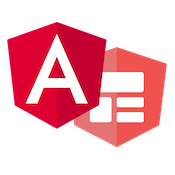Learn how to add the Internationalization Polyfill to a Angular CLI Project
Angular has great features out of the box that make developing web applications much easier. One of the great abilities of Angular is Internationalization (Intl) support. Many of Angular features such as the built in currency and date pipes use Internationalization to automatically display the appropriate currency format to users in different geo locations/regions.
If you have played with Angular latest 2.x+ at all you may of run into a strange error about Intl being undefined in certain browsers. This is because under the hood Angular uses the new Internationalization standard built into JavaScript and the browser. The benefits of this is that Angular doesn't have to bloat itself with Intl specific code and can use the Intl API provided by the browser. The downside to this is not every browser supports Intl just yet. So to fix this there are a couple of things we need to do to support those browsers.
Polyfill, Polyfill, Polyfill
Polyfilling is all the rage in JavaScript! What is Polyfilling? Its core concept is to load additional code in the browser to "fill in" any missing features that might not yet be supported. There are many variations of this idea but the main benefit is browsers that support the feature download less code and are faster while older browsers still get all the functionality they need.
So how do we add Intl support to our Angular app? Well specifically we will focus on using a Angular CLI project. The techniques we will cover can apply to Webpack and other build systems as well.
The first option which is also the easiest is simply adding a script tag to your index.html. No really that's all it takes!
<script src="https://cdn.polyfill.io/v2/polyfill.min.js?features=Intl.~locale.en"></script>Now you have Intl support in all your browsers. polyfill.io is a nifty service that will only load the polyfill if the requested browser actually needs it. This is a pretty good solution but what if you want your polyfill to be bundled with your scripts? You potentially get better performance and your application doesn't rely on a third party CDN that if it goes down it takes your app down with it. So whats the next option?
Well with the Angular CLI its actually quite easy. First we will use npm to install the Intl polyfill directly into our Angular app. To do this run npm install intl --save. Once installed in your Angular CLI project go to the /src/polyfills.ts file. In here you can add the following lines.
import 'intl';
import 'intl/locale-data/jsonp/en.js';That's it! Now when your project builds it will add the Intl polyfill and the English language service. You can add more language support by importing more language files. Now the downside to this is even if the browser supports Intl it still has to download the code. You could potentially mitigate this using feature detection and dynamic loading. The great part about polyfilling is as browser support for Intl gets better we will be able to drop the dependency all together!

